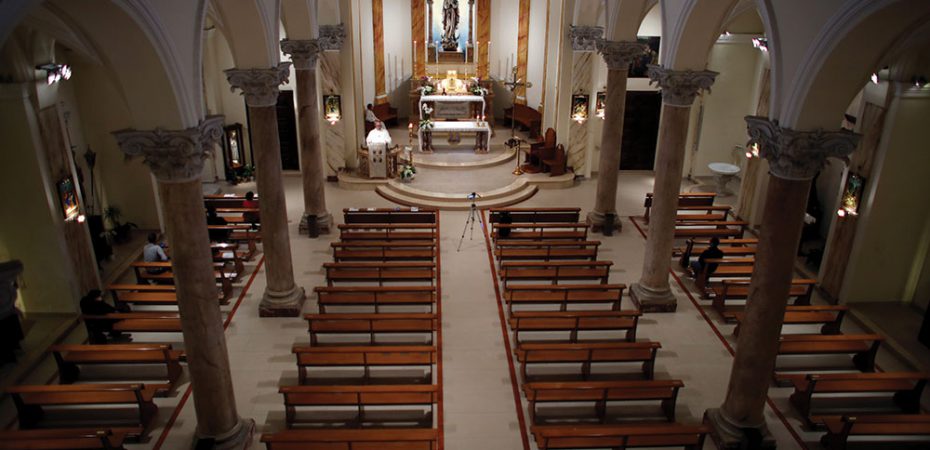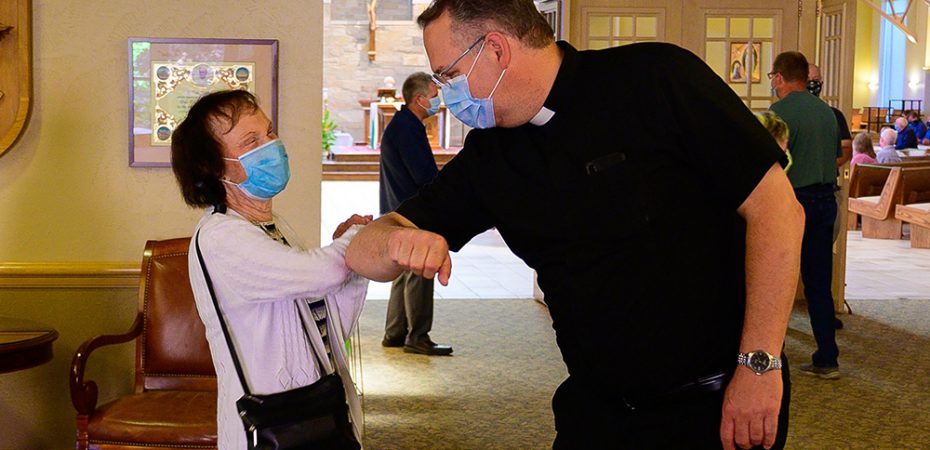Sharing Hope with Gentleness
Parish communications should foster an encounter with Christ
Rob DeFrancesco Comments Off on Sharing Hope with Gentleness
In today’s fast-paced, often-contentious communications environment, the way we interact with one another matters more than ever. Pope Francis, in his message for the 59th World Day of Social Communications, urges us to “share with gentleness the hope that is in your hearts” (cf. 1 Pt 3:15-16). This is important for everyone to remember, but it is especially relevant to those on the front lines, pastors and their parish staff members, who are responsible for welcoming and walking with their communities, usually through bulletins, social media and websites.
Parish communication is not only about making announcements or distributing information; it is about evangelization. We all know this: It is about sharing the Good News in a way that invites, rather than ignores, and that fosters dialogue rather than apathy. As the executive director of the Catholic Media Association (CMA), and with more than two decades of experience in diocesan communications, I have seen firsthand how the way we communicate can either draw people closer to the Church or push them away. Pope Francis’ message is an invitation to reassess how we communicate hope in Christ at the parish level.
For 18 years I had the honor of working for the now-retired Bishop Thomas J. Olmsted of Phoenix, first as editor of The Catholic Sun newspaper, then as the diocese’s director of communications. At the time of his appointment to Phoenix in 2003, I recall that everyone — local media, the presbyterate, chancery staff and parishioners — was intently focused on the same question for him: What is your vision for leading the Diocese of Phoenix?
His answer was pastoral, succinct and even disarming: to lead people to an encounter with the living Jesus Christ through conversion, communion and solidarity.
This guiding vision for the diocese was inspired by Pope St. John Paul II’s landmark apostolic exhortation Ecclesia in America, and it shaped the direction of the Church in Phoenix for the next two decades — including, among many other things, our approach to communicating in new and authentic ways.
Over my years in Phoenix, we followed our bishop’s call to lead people to an encounter with the living Jesus Christ by focusing our communications efforts on the life of the Church. The Diocese of Phoenix grew to be an early pioneer in social and digital media, expanding from its nationally recognized diocesan newspaper to develop some great websites, partner with Catholic radio, produce an ongoing series of podcasts and weekly video messages, and launch a weekly newsletter and beautiful bimonthly magazine.
One initiative that stands out in particular (and it wasn’t even my idea!) was a major investment in helping our pastors communicate directly and, hopefully, more effectively with their parishioners. We partnered with Flocknote to provide each of our parishes with its own account so that pastors and their teams could communicate directly with their communities through emails and texts, with the goal of creating closer communities and an authentic encounter with the living Jesus Christ. This initiative was a major investment of resources, but the partnership is now closing in on a decade and by all accounts is well worth it. (I look forward to getting my parish’s “Friday Flash” with the weekly message from my pastor and learning about what’s new in our parish community.)
Tuned to Encounter
Pope Francis grounds his message in 1 Peter 3:15-16, which instructs believers to share their faith with “gentleness and reverence.” This passage is a powerful reminder that truth should never be wielded as a weapon but should be shared in a way that encourages and uplifts.
Too often, we see social media interactions become heated and divisive. Yes, even among Catholics! Pope Francis warns against the temptation to engage in communication that is confrontational, harsh or lacking in charity. This is an especially critical message for Catholic communicators at the parish level, where people turn for guidance, formation and a sense of belonging. If our message is not rooted in kindness and hope, we risk losing the very people we are called to reach.
Effective parish communication is not simply about logistics; it is about fostering an encounter with the living Jesus Christ. Every bulletin, website update, social media post and conversation is an opportunity to share the hope of the Gospel.
Whether encountering returning Catholics, newcomers seeking the sacraments or people in crisis, parishes serve as the first point of contact for many who are seeking a connection with the Church. A parish’s approach to communication can make all the difference. Does the parish website reflect an open, welcoming community? Do social media posts engage people in meaningful ways? Are the messages in the bulletin inviting, or do they come across as dry and bureaucratic?
Practical Steps
To bring Pope Francis’ message to life in our parishes, we must be intentional about how we communicate. Here are four practical steps every parish can take:
1. Focus on personal witness. People connect with stories, not just schedules. Rather than simply listing events in the bulletin or on social media, parishes should prioritize sharing real stories of faith. This could be a parishioner’s testimony of conversion, a story about a service project’s impact, or a reflection from a priest or ministry leader about the presence of Christ in daily life.
2. Adopt a tone of kindness and invitation. Parish communication should always be inviting and affirming. Rather than framing announcements as obligations (“You must attend this event”), shift the tone to one of personal invitation (“We’d love for you to join us”). This small change makes a significant difference in how messages are received.
3. Use digital media for good. Social media can either fuel division or spread hope. Parishes should intentionally use digital platforms to share the Gospel and reflect parish life, including reflections on Scripture, community spotlights or simple words of encouragement. Avoid engaging in online debates that do more harm than good. Instead, focus on content that fosters genuine conversation and connection.
4. Train parish staff and volunteers in gentle communication. Communication is a ministry, and those responsible for it need formation. Whether it’s training on best practices for social media, guidance on writing for parish bulletins or workshops on speaking with compassion, ongoing formation helps ensure that parish communication truly reflects the heart of the Church.
At the Catholic Media Association, we are committed to equipping Catholic communicators — whether they work for a diocese, a publication, a media outlet, a charity, a ministry, a university or a parish — with the tools they need to evangelize effectively. This includes offering professional development opportunities, providing best practices in media and communication, and fostering a network of support for those working in Catholic media.
Parish communicators, in particular, play a vital role in the Church’s mission, yet many do not have the training or resources they need. The CMA can be a valuable partner in this regard, offering insights and strategies that help parishes communicate with clarity, charity and effectiveness.
A Call to Action
Pope Francis’ message is a challenge to all of us who communicate on behalf of the Church: Are we sharing the Gospel with gentleness and hope? At the parish level, this means being intentional about the ways we engage.
The Church has the greatest message in the world: the message of Christ’s love and redemption. But the way in which we share that message matters. If we communicate with authenticity and a desire to lead people to an encounter with the living Jesus Christ, we can help foster a Church that truly welcomes and draws people closer to Christ.
Pope Francis urges us to “find those glimmers of goodness that inspire us to hope,” and his words inspire us: “Hope is always a community project.”
As Catholic communicators, let us take Pope Francis’ words to heart and commit ourselves to sharing hope with gentleness, one post, one conversation and one parish bulletin at a time.
ROB DeFRANCESCO is the executive director of the Catholic Media Association, an organization committed to helping the Church share the Good News through Catholic media. Founded in 1911, the CMA brings together publishers and media professionals dedicated to serving the Church. Today, it represents 355 member organizations and 890 mission-driven professionals. Before leading the CMA, DeFrancesco served the Diocese of Phoenix for over two decades, first as editor of its diocesan newspaper and later as director of communications.





